9 Bugs That Look Like Dust And Lint And How To Get Rid Of Them!
Are you tired of dealing with bugs that resemble dust and lint? You’re not alone! These pesky critters can be frustrating to get rid of, but with the right information, you can take back control of your home. In this article, we’ll explore 9 common types of bugs that look like dust and lint, and provide practical tips on how to eliminate them for good.
We’ll delve into the world of aphids, clothes moth larvae, dust mites, mealybugs, mold mites, Psocids, termites, whiteflies, wooly aphids, beech scale, body lice, cottony cushion scale, pot worms, springtails, thrips, and true cochineal bugs. You’ll learn what to look for in terms of bites or damage, and how to prevent future infestations.
So, let’s get started on this journey to a bug-free home!
Aphids.
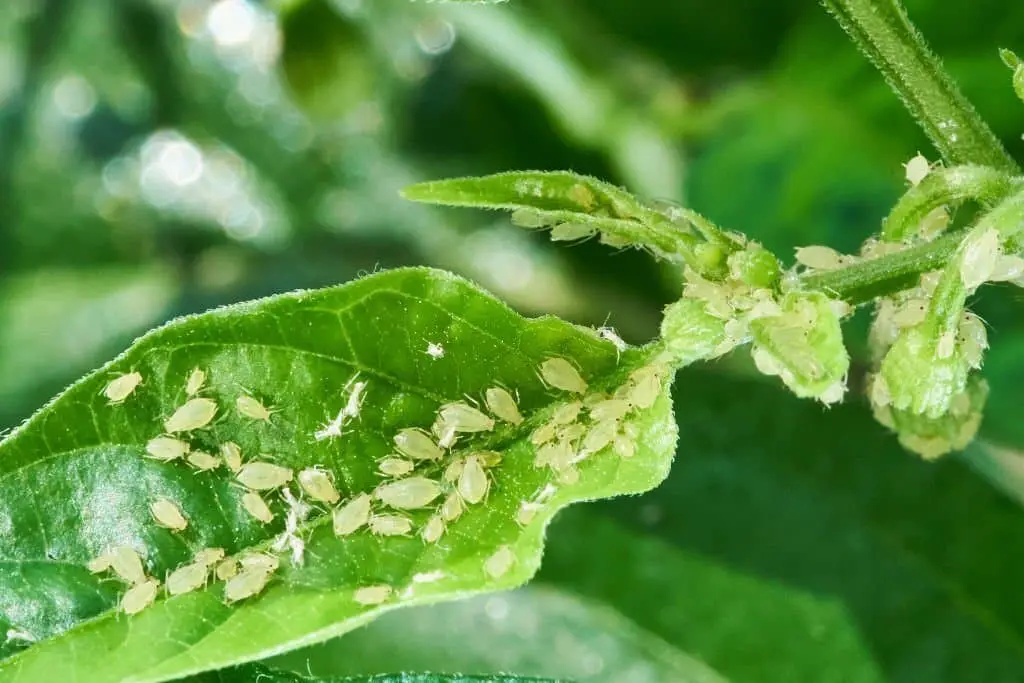
Those ubiquitous small insects, often exhibiting shades of green, brown, black, or pink, have earned the reputation as a gardener’s arch nemesis. Their sudden, seemingly spontaneous appearance, followed by an alarming rate of multiplication, can swiftly devastate a crop, leaving a once-thriving garden in disarray.
But what are aphids, really? And where do they come from?
Aphids, part of the Hemiptera family, are small, soft-bodied insects that thrive worldwide, with over 4000 species. These tiny creatures measure less than a millimeter to over a centimeter in length, featuring either long or short antennae. The vast majority of aphids lack wings, but can develop them if their population density increases. Notably, these insects display a range of colors, including green, brown, black, and pink.
Aphids sustain themselves by piercing plant tissues with their elongated mouthparts and extracting sap. This feeding behavior can cause significant harm to the plant, resulting in symptoms like wilting, stunted growth, and yellowing leaves. Additionally, aphids produce a sweet substance called honeydew, which attracts other insects and fosters sooty mold growth on the affected plant.
What do aphid bites look like?
The telltale signs of aphid bites typically manifest as tiny, crimson bumps on the skin, often accompanied by an uncomfortable sensation of itchiness or discomfort. On occasion, these bumps can become inflamed and swell in size, while in some instances, individuals may also exhibit hives or other symptoms characteristic of allergic reactions.
How to get rid of aphids.
When dealing with aphid infestations in your garden, several approaches can be effective in eliminating them. One strategy involves utilizing insecticides, which can be an efficient way to control the problem. Alternatively, you can introduce natural predators such as ladybugs or lacewings into your garden ecosystem. Another option is to manually remove the aphids from your plants, a simple yet straightforward method.
Regardless of the approach you choose, it’s crucial to maintain close monitoring and take swift action as soon as you notice aphid presence on your plants. By doing so, you can prevent the infestation from causing significant harm to your garden.
Clothes Moth Larvae.
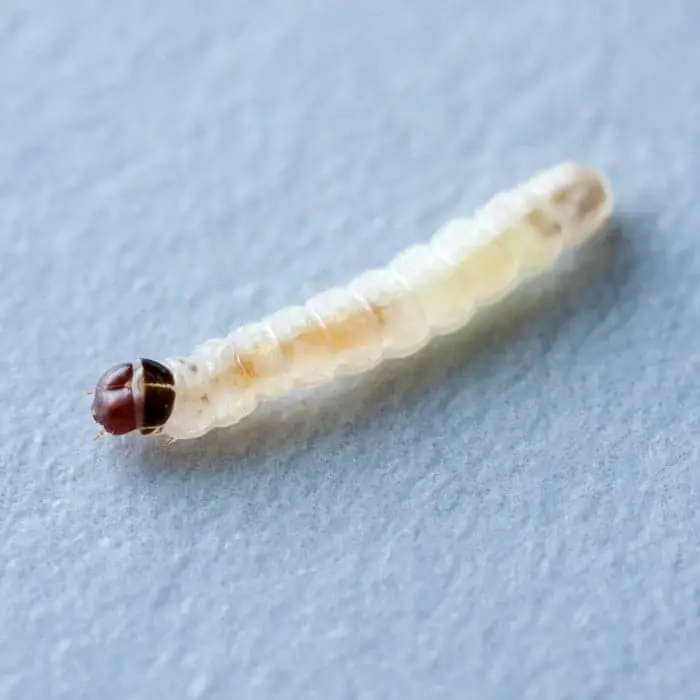
In the world of textiles, there exists a tiny but formidable foe: the clothes moth larva. These minuscule, white worms are the result of clothes moths laying their eggs in fabric, and they’re known to wreak havoc on garments. Measuring roughly the size of a grain of rice, the larvae are often found in clothing, particularly those made from wool, cotton, and silk. Their insatiable appetite for fabric leads them to feed on these materials, causing damage that can be irreversible if left unchecked.
When discovering clothes moth larvae in your wardrobe, it’s essential to take prompt action by removing them to prevent further destruction.
What do clothes moth larvae bites look like?
Clothes moths larvae often go unnoticed until the telltale signs of damage become apparent on clothing. The tiny, round bites are usually clustered together in groups, making them somewhat difficult to spot at first glance. However, upon closer inspection, it’s possible to identify these subtle marks. Typically, clothes moth larvae target natural fiber clothing, such as wool or cotton items.
How to get rid of clothes moth larvae.
Tiny holes in your clothes? The culprit might not be what you think – it’s likely those pesky clothes moth larvae. Adult moths may not directly munch on fabric, but their larvae are notorious for feasting on natural fibers like wool, cashmere, and cotton. To tackle the problem, begin by giving your closet or storage area a good deep clean. Don’t forget to vacuum carpets and upholstery, and wash any affected clothing in hot water to eliminate the pests.
As an added layer of defense, you can try using cedar oil or moth balls to repel these unwanted critters. If the damage persists, consider bringing in the experts – a pest control professional can help eradicate the infestation for good.
Dust Mites.
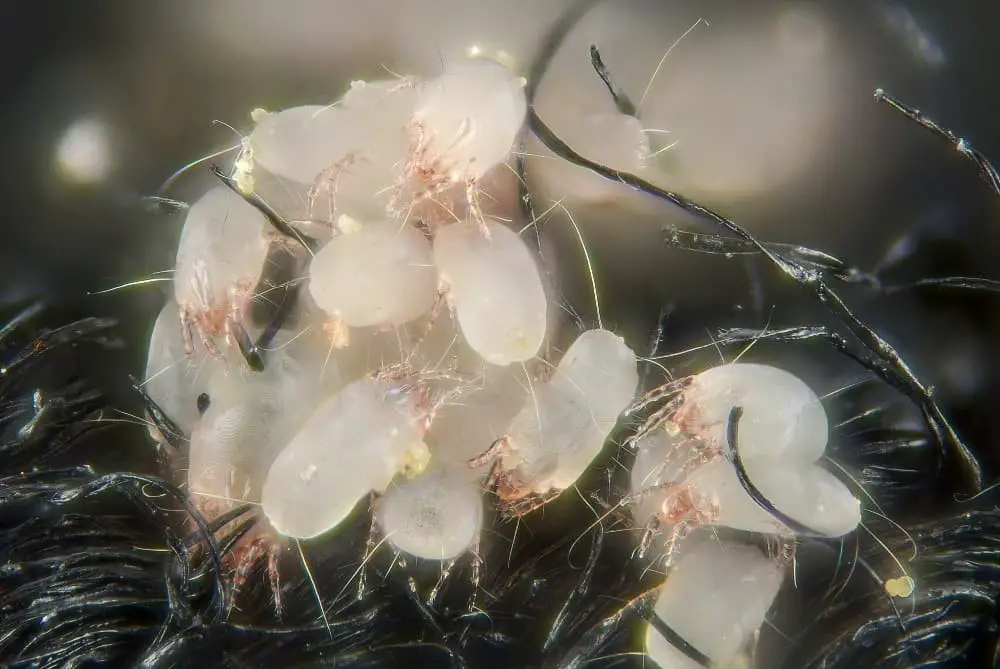
Dust mites are ubiquitous, inhabiting every nook and cranny of our daily lives. They thrive in the dust that settles on carpets, furniture, bedding, and clothing, as well as in the air we breathe. Their presence is not limited to residential spaces; they can be found in offices, hotels, and other environments where people congregate. These tiny creatures are barely visible to the naked eye, requiring a microscope for detection.
Despite their small size, dust mites have a significant impact on individuals with allergies. In fact, dust mite allergies are the most prevalent type of allergy in the United States, affecting over 20 million people. The symptoms of dust mite allergies can range from mild to severe, including sneezing, congestion, runny nose, itchy eyes, and skin rashes. In extreme cases, they can even trigger asthma attacks.
For those who suffer from these allergies, understanding the nature of dust mites is crucial in managing their condition.
What do dust mite bites look like?
The characteristic appearance of dust mite bites is that of small, raised red bumps on the skin’s surface. These bumps are often accompanied by itching sensations, giving the impression that one has been bitten by a mosquito or another insect. In some instances, these bites can also trigger an allergic reaction in individuals who are sensitive to their saliva and bodily waste products.
How to get rid of dust mites.
To tackle dust mite problems, a combination of strategies is key. For starters, maintain a regular vacuuming routine using a HEPA filter-equipped cleaner to effectively capture tiny particles. In addition, wash your bedding in hot water once a week to disrupt the mites’ life cycle and make it harder for them to survive. Furthermore, control humidity levels in your home by implementing measures that keep the air relatively dry, as dust mites are more likely to thrive in humid environments.
Last but not least, consider incorporating products specifically designed to combat dust mites into your cleaning arsenal. By employing these multi-faceted approaches, you should be able to successfully eradicate dust mites and prevent their return.
Mealybugs.
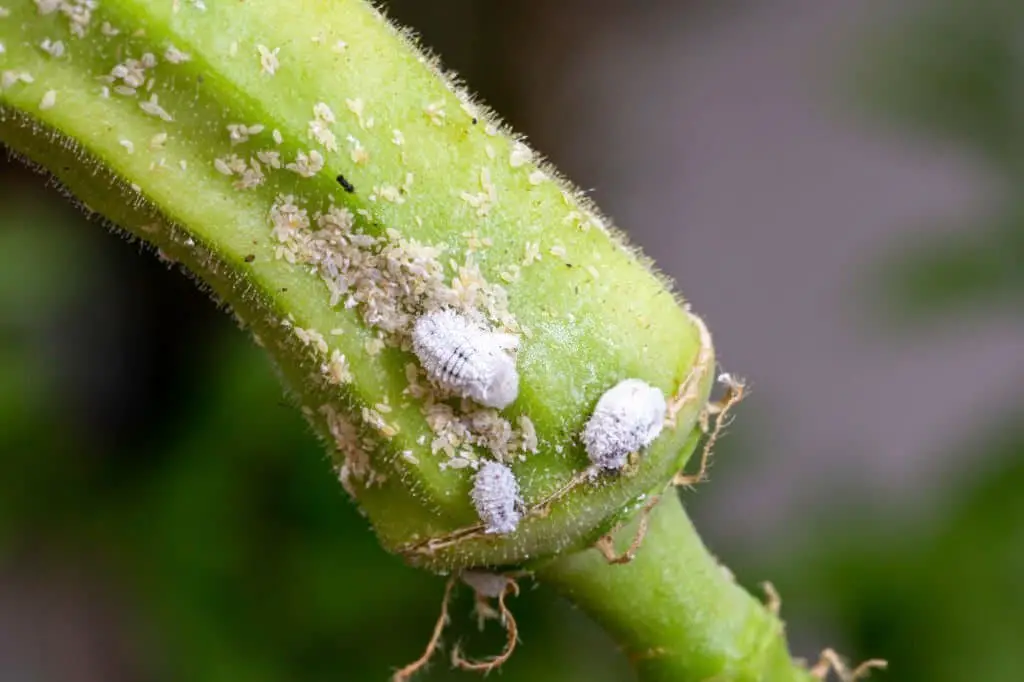
Mealybugs, tiny soft-bodied insects coated with a white powdery wax, can wreak havoc on both indoor and outdoor plants. Ranging from 1-5 millimeters in length, these pests are notorious for their ability to drain plant sap, leading to wilted, discolored, and leafless plants. They tend to congregate on stems and leaves, using their mouthparts to suck out the sap and spread diseases between plants.
As warm weather enthusiasts, mealybugs thrive in these conditions, reproducing rapidly and producing multiple generations annually. Their ability to quickly spread and hide in hard-to-reach crevices on plants makes them a formidable foe in terms of control.
How to get rid of mealybugs.
Mealybugs are notorious for targeting houseplants, leaving them weakened or even killed if left untreated. These small, white, fuzzy pests feed on plant sap, causing significant harm. Fortunately, there are several effective methods to eliminate mealybugs. One approach is to physically remove them using a damp cloth. Another option is to utilize a mixture of water and dish soap for a gentle yet effective spray.
For more severe infestations, insecticides might be necessary, but it’s crucial to exercise caution when selecting products, as some can harm beneficial insects like ladybugs. A homemade remedy combining water, rubbing alcohol, and peppermint oil also shows promise in combating mealybug populations.
Mold Mites.
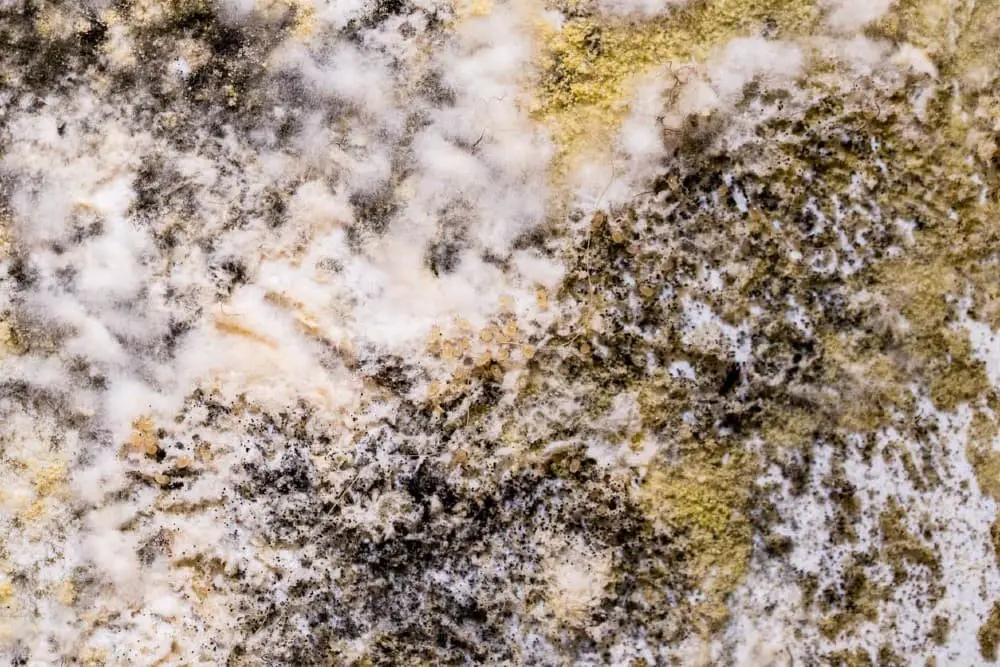
While mold mites might seem like insignificant creatures due to their microscopic size, they can still cause issues for homeowners. These tiny critters thrive in damp and humid environments, often making their presence known in homes with water damage or leaks. Additionally, moldy food can also provide a welcoming habitat for these unwanted visitors. Although mold mites are not harmful to humans, they can still be considered a nuisance.
Homeowners may want to take steps to eradicate them if they find themselves dealing with an infestation.
How to get rid of mold mites.
Mold mites, despite being tiny creatures, can cause significant discomfort for some individuals. These microscopic arachnids thrive in damp and humid environments, where they feed on mold and mildew. Although they don’t pose a threat through biting or stinging, they can still trigger allergic reactions in certain people. If you suspect a mold mite infestation has taken hold, there are steps you can take to eradicate the problem. First, it’s essential to identify the source of the infestation.
Mold mites often gain entry into homes via open doors and windows, or by hitching a ride on clothing or shoes. Once inside, they’ll seek out damp and humid areas to establish themselves. Conduct a thorough search under sinks, in basements, and around leaky pipes for signs of mold mite activity. If you locate the source of the infestation, your next step should be to eliminate it. This may involve fixing any leaks and drying out wet areas.
In cases where the infestation is particularly widespread, professional assistance may be necessary to effectively remove the mold mites.
Psocids.
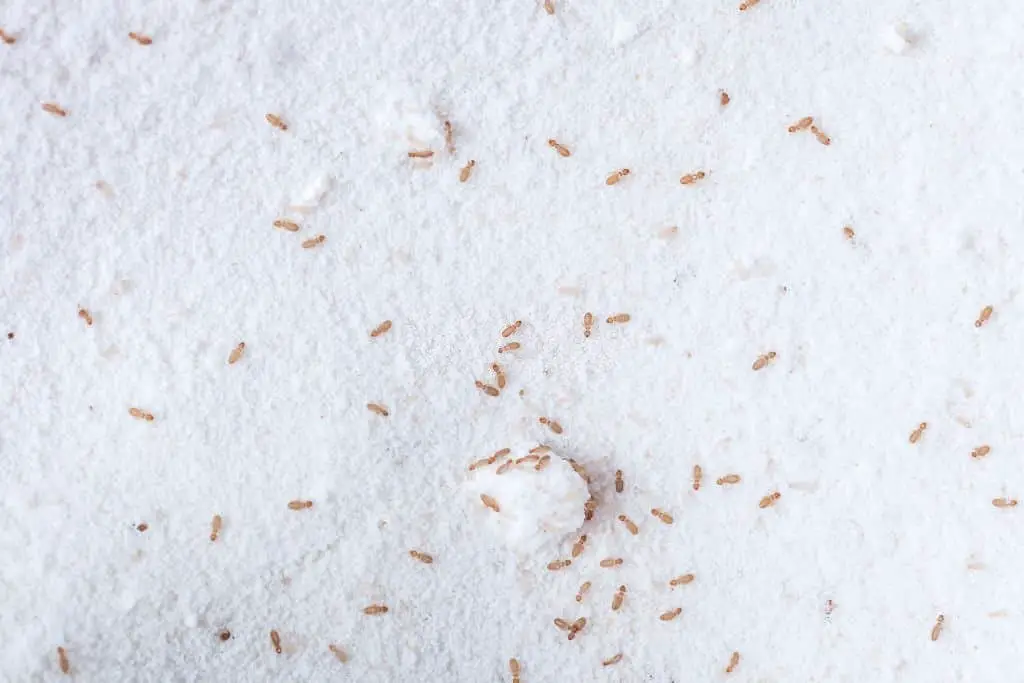
Psocids, often mistaken for dust mites due to their similar size and appearance, are actually tiny wingless insects that thrive in various indoor environments. These unassuming creatures have evolved to feed on mold and fungus, making them a common find in homes, offices, and other buildings. Although they do not pose a threat to humans through biting or stinging, the mere presence of psocids can be considered a nuisance.
Moreover, some individuals may experience allergic reactions to their tiny bodies, adding another layer of complexity to this seemingly innocuous insect.
What do Psocid bites look like?
Psocid bites typically manifest as small, red bumps on the skin, which can sometimes be accompanied by itching or discomfort. While generally not a cause for concern, these bites can trigger more severe reactions in individuals with an allergy to psocids, including hives and breathing difficulties. If you exhibit any of these symptoms following a psocid bite, it is essential to seek medical help promptly.
What can you do to prevent Psocid bites?
To minimize the likelihood of getting bitten by psocids, consider implementing a few simple precautions. When venturing outdoors, especially in wooded areas or near vegetation, be sure to wear protective clothing such as long sleeves and pants. Additionally, apply an insect repellent that contains DEET, picaridin, oil of lemon eucalyptus, or IR3535 to exposed skin. It’s also a good idea to avoid using scented products like perfumes or lotions when outdoors, as these can attract psocids.
Furthermore, make it a habit to keep your skin covered as much as possible and inspect your clothing for any unwelcome hitchhikers before entering indoor spaces. Finally, showering and washing your clothes after spending time outdoors can help prevent psocid bites from occurring in the first place.
How to get rid of psocids.
To eliminate psocids, you can employ several effective methods. Vacuuming is a straightforward approach that can quickly dispatch the unwanted insects. Additionally, using a dust mop or damp cloth to wipe down surfaces can also be an efficient way to eradicate them. For those who prefer a chemical solution, insecticides are available; however, it’s crucial to follow the product’s instructions carefully and take necessary precautions, such as keeping pets and children away from the treated area.
In some cases, psocid infestations may require professional intervention, but in most instances, these simple steps can provide a permanent solution.
Termites.
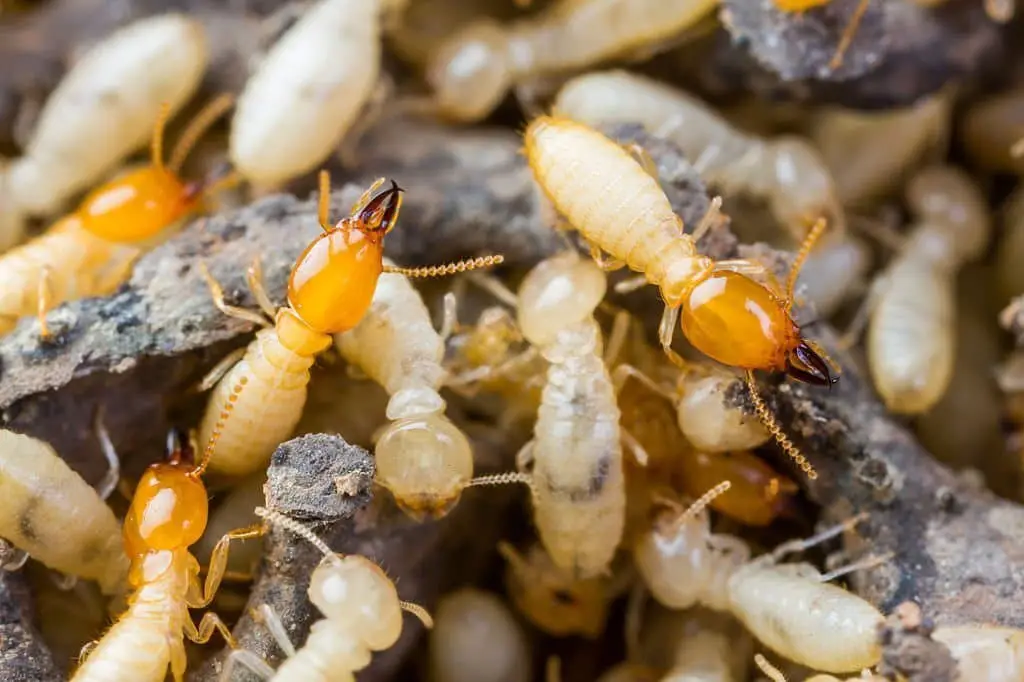
The mere mention of the word ‘termite’ can evoke a sense of unease. These seemingly insignificant insects are actually a significant threat to property owners, causing billions of dollars in damage annually. With no signs of slowing down, it’s crucial to address termite issues promptly. Delaying action only exacerbates the problem, allowing the infestation to worsen over time. There are various types of termites, but the most prevalent in the United States is the subterranean termite.
Characterized by their underground colonies and network of mud tunnels, these pests travel from their nests to homes in search of sustenance – with wood being their preferred snack. This poses a significant threat to homeowners, as these unwanted diners may see your house as their next meal.
What do termite bites look like?
Small, red welts, typically accompanied by itching and discomfort, are the hallmark of termite bites. The intensity of these sensations can vary, with some individuals experiencing only mild annoyance while others may find their symptoms more pronounced and even painful. In rare instances, termites can trigger an allergic response, further complicating the issue.
If you suspect a termite bite has occurred, prompt medical attention is crucial to rule out any underlying conditions or complications.
How to get rid of termites.
While it’s often recommended to hire a professional exterminator to tackle termite infestations, there are some DIY methods you can try to get rid of these pests. However, it’s essential to recognize that termites can be challenging to eliminate without the help of a trained expert. If you’re determined to take on the challenge yourself, start by identifying where the termites are coming from.
By pinpointing the source of the problem, you may be able to block their entry point and prevent them from infesting your home further. Next, assess your property for any areas that may be attracting these pests due to moisture or dampness. Termites thrive in humid environments, so removing any sources of water will make your home less appealing to them. Another approach is to utilize bait traps, which can be an effective way to kill termites.
To maximize their effectiveness, place them strategically around your property. If you’re unsure where to position the traps or need additional guidance on how to use them effectively, a professional exterminator will be able to provide valuable insight and support.
Whiteflies.
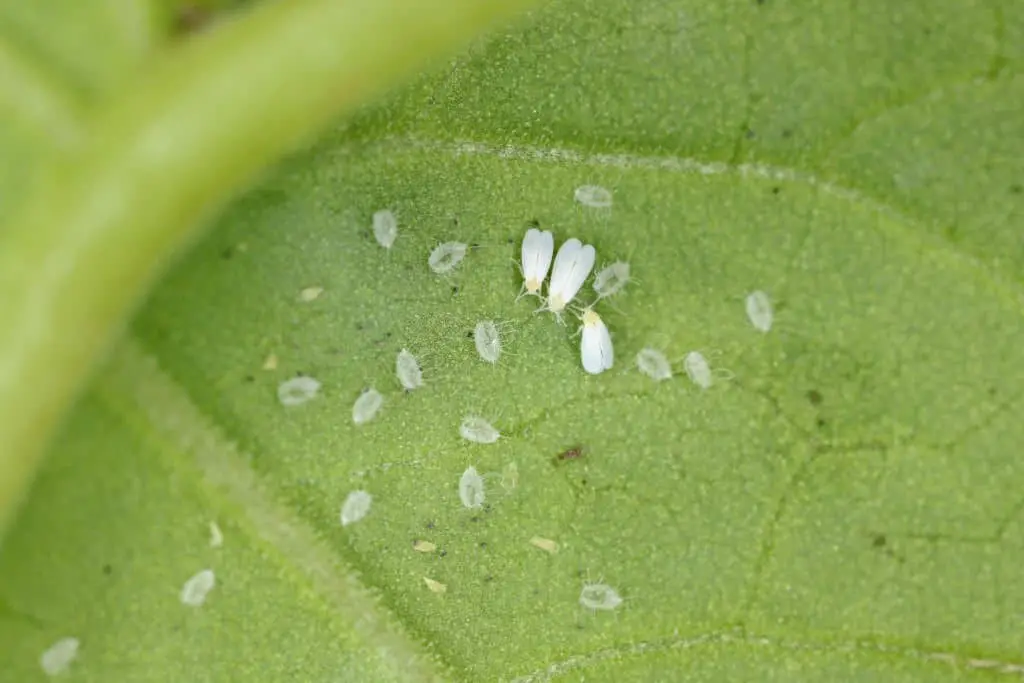
Whiteflies, often confused with aphids or mealybugs due to their similar physical characteristics, are actually distinct insects that thrive in a plant-sap diet. This feeding habit can have detrimental effects on the health of plants, leading to symptoms such as yellowed leaves and wilting. Moreover, whiteflies serve as vectors for various plant diseases, further exacerbating the impact they have on affected flora.
How to get rid of whiteflies.
Whiteflies, notorious for being one of the most challenging pests to manage, are tiny, white insects that feed on plant sap. Their ability to rapidly multiply and spread to other plants makes them a significant threat to any garden or farm. Despite their small size, they can cause substantial damage if left unchecked.
To effectively tackle these pesky insects, consider the following strategies: Firstly, remove any affected plants from your garden or farm to prevent the infestation from spreading further. Secondly, destroy infected plants by burning them to ensure that no eggs or larvae remain behind. Thirdly, use insecticides specifically designed for whitefly control to significantly reduce their population.
Finally, utilize traps to capture and contain these insects, thereby reducing their impact on your crops.
Wooly Aphids.
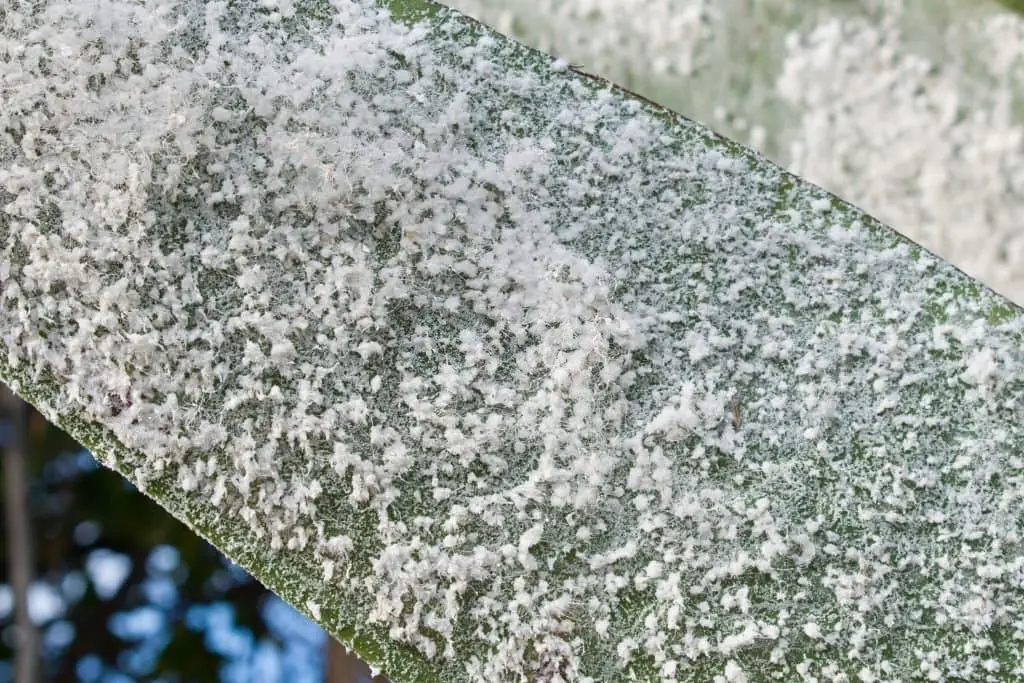
Woolly aphids are tiny, white insects that thrive on plant sap, typically congregating in significant numbers on leaf undersides or stems. By siphoning off this vital nutrient, these pests can compromise the health of affected plants, rendering them more vulnerable to disease. This insidious infestation is a common issue affecting various crops, including roses, fruit trees, and vegetables.
The rapid reproductive cycle of woolly aphids compounds control difficulties, while their fuzzy bodies render many pesticides ineffective, making eradication an even greater challenge.
How to get rid of wooly aphids.
To eradicate wooly aphids from your plants, it’s crucial to act swiftly. One effective approach is to utilize pesticides, which are widely available at hardware or home improvement stores. However, it’s essential to follow the product’s instructions carefully to avoid harming your plants. Another method is to introduce natural predators that feed on the aphids without causing harm to your plants. Ladybugs are an excellent choice for this purpose and can be sourced from garden supply stores.
If you prefer a chemical-free solution, consider creating a homemade spray using water and dish soap. This non-toxic concoction can be easily prepared by mixing equal parts of water and soap, then spraying it directly on the affected areas. It’s vital to tackle wooly aphid infestations promptly, as they can cause significant damage to your plants if left unchecked. By trying out one or more of these methods, you should be able to successfully eliminate the pests in no time.
Beech scale.
The beech scale, a small brownish-black insect, is notorious for its affinity towards feeding on the sap of beech trees. Measuring approximately one millimeter in diameter, this tiny but formidable creature boasts a hard, protective shell that shields it from predators and harsh environmental conditions. In its reproductive cycle, the female beech scale carefully deposits her eggs on the underside of leaves, where they remain dormant until hatching into young scales.
These juvenile insects then migrate to the tips of branches, where they feed voraciously on sap, causing potential damage to their hosts. Indeed, the beech scale’s penchant for sap-sucking can lead to the demise of entire branches and even trees, making it a serious pest in both Europe and North America, where it has been introduced since the early 1800s.
Body lice.
Body lice are minuscule insects that inhabit human skin and clothing. Their diet consists of human blood, while they lay their eggs in the seams of garments. This parasitic infestation can cause intense itching and even spread diseases like typhus. To prevent body lice from taking hold, it’s essential to avoid sharing clothes or bedding with someone who has been afflicted. Instead, opt for thorough washing of clothing items in hot water followed by high heat drying.
Should you suspect an infestation, seek medical attention promptly.
Fortunately, there are various over-the-counter treatments available to effectively eliminate body lice. These include lotions, creams, and shampoos. It’s crucial to carefully follow the instructions provided on product labels. When dealing with a body lice infestation, it’s also vital to thoroughly wash clothing items, bedding, and any other potentially affected textiles in hot water and then dry them using high heat.
Cottony cushion scale.
Cottony cushion scales are notorious pests of citrus trees globally, causing significant damage with their destructive feeding habits. The adult female scale is easily recognizable due to its white, waxy covering resembling cotton, which shields it from predators and environmental stressors while it feeds on plant sap. In contrast, the male scale lacks this protective coating.
The consequences of cottony cushion scale infestations can be severe, weakening trees and making them more vulnerable to disease and insect invasions. Furthermore, the honeydew secreted by these pests attracts ants and other insects that can further harm the tree. While it may be challenging to control established infestations, there are several measures you can take to prevent cottony cushion scale from taking hold in the first place.
This includes maintaining healthy trees free of stress, conducting regular inspections for signs of infestation, pruning out affected branches and destroying them, and utilizing insecticides if necessary. Always follow product instructions carefully and read labels before applying any pesticides.
Pot worms.
In the world of gardening, a common sight is the pot worm – a small, white, segmented creature that thrives in the soil. While they may seem like pests at first glance, these beneficial organisms play a crucial role in maintaining the health and fertility of your garden.
Pot worms are often mistaken for maggots or other unwanted critters, but their true nature is as a natural soil conditioner. They help break down organic matter, improving drainage and allowing roots to breathe.
Their presence is felt throughout the garden, from the compost pile to the air itself – they’re incredibly resilient and can survive in a wide range of environments.
So why are pot worms such a valuable asset? For starters, their burrowing activities help to aerate and till the soil, allowing for better root growth and overall plant health.
Additionally, as they consume organic matter, they break it down and release vital nutrients back into the soil – a process that’s essential for maintaining a productive and thriving garden.
Springtails.
Arthropods like springtails inhabit the soil and leaf litter, characterized by their distinctive tail-like appendage. This appendage serves as a spring, launching the springtail into the air when touched. As essential components of the ecosystem, springtails contribute to decomposing organic matter and recycling nutrients back into the soil. They also prey on smaller insects like mites and aphids.
While harmless to humans and pets, an infestation can become problematic if springtails invade your home in large numbers. In such cases, removing their food source and moisture may be effective in eliminating them.
Thrips.
Thrips, tiny winged insects that feed on plant sap, pose a significant threat to many gardeners. Their feeding habits can cause stunted growth, deformities, and even death in plants, while also transmitting diseases from one plant to another. To effectively manage thrip infestations, it’s crucial to adopt a multi-faceted approach. First, prioritize maintaining healthy and stress-free plants, as this will render them less appealing to thrips.
Secondly, encourage the presence of beneficial insects like ladybugs and lacewings that prey on thrips. Thirdly, utilize traps, such as yellow sticky traps, to capture these pests. If the infestation is severe, insecticides may be necessary. The journey to organic thrip control begins with good garden hygiene, including eliminating weeds that serve as hosts for thrips. Sanitation also involves removing debris and plant litter to reduce hiding spots and egg-laying sites for thrips.
Furthermore, crop rotation can help disrupt the thrip life cycle, ultimately contributing to their control.
True cochineal bug.
In the heart of Central and South America lies a tiny, yet mighty, insect with a significant impact on human history. The cochineal bug, scientifically known as Dactylopius coccus, is a small, flat, oval-shaped creature that dwells on cactus plants. Its female counterparts flaunt vibrant red or orange hues, while the males sport a sleek black coat. These bugs thrive on the sap of their cactus hosts and release a striking red dye called carmine when crushed.
This natural pigment has been employed to color a wide range of products, including food, cosmetics, and fabric. Notably, it is deemed safe for consumption and application to the skin; however, some individuals may experience an adverse allergic reaction. The cochineal bug’s unique property has been harnessed for centuries, with its red dye serving as a prized commodity in many cultures.
White scale insects.
White scale insects are insidious pests that can wreak havoc on a broad spectrum of plant life. These tiny, sap-sucking invaders often converge on the undersides of leaves, where they pierce the plant tissue with their mouthparts and feast on the sap. Left unchecked, these pests can severely weaken or even kill plants. The sheer variety of white scale insect species means they can thrive in a range of climates, making them a persistent nuisance for gardeners and farmers alike.
As they feed by sucking out plant sap, these insects can also facilitate the spread of diseases to affected plants. Should you suspect the presence of white scale insects on your plants, it’s essential to accurately identify the type of pest involved. This will enable you to select the most effective treatment approach. Fortunately, there are several methods for controlling these pests, and the best course of action will depend on the specific needs of your plants.
FAQs
What insect looks like a piece of lint?
While we often overlook the small, dark housefly scurrying across our floors, it’s essential to recognize its profound impact on ecosystems worldwide. This unassuming insect is a vital pollinator, facilitating the reproduction of numerous plants and flowers. Moreover, flies play a crucial role in disease transmission, which can have both positive and negative consequences.
Despite their lack of popularity, houseflies are quietly performing essential functions that underpin the delicate balance of our planet’s ecosystems.
Do bed bug eggs look like lint?
Bed bug eggs are a common concern for many people, as they can be difficult to identify. Measuring around the same size as a poppy seed, these tiny white eggs can blend seamlessly with their surroundings, making them easily mistaken for lint or dust particles. The lack of visibility makes it challenging to spot them without the aid of magnification. Despite this, it’s essential to know how to detect and eliminate bed bug eggs effectively.
Conclusion
When you’re done inspecting your home for unwanted visitors, take a moment to appreciate the importance of accurate identification. A professional’s expertise can quickly diagnose the issue and provide a tailored solution. In the meantime, maintain a calm demeanor and keep your space tidy. Remember, it’s always better to be safe than sorry when it comes to dealing with potential pests. Thanks for joining me on this journey!
Related Posts
When it comes to eliminating bed bugs, many homeowners turn to household solutions in hopes of finding a quick fix. But do these common products truly kill bed bugs? The answer lies in understanding their efficacy and potential risks. In this context, let’s explore the effectiveness of hydrogen peroxide, baby powder, boric acid, ammonia, washing clothes, and Lysol against these pesky pests.






